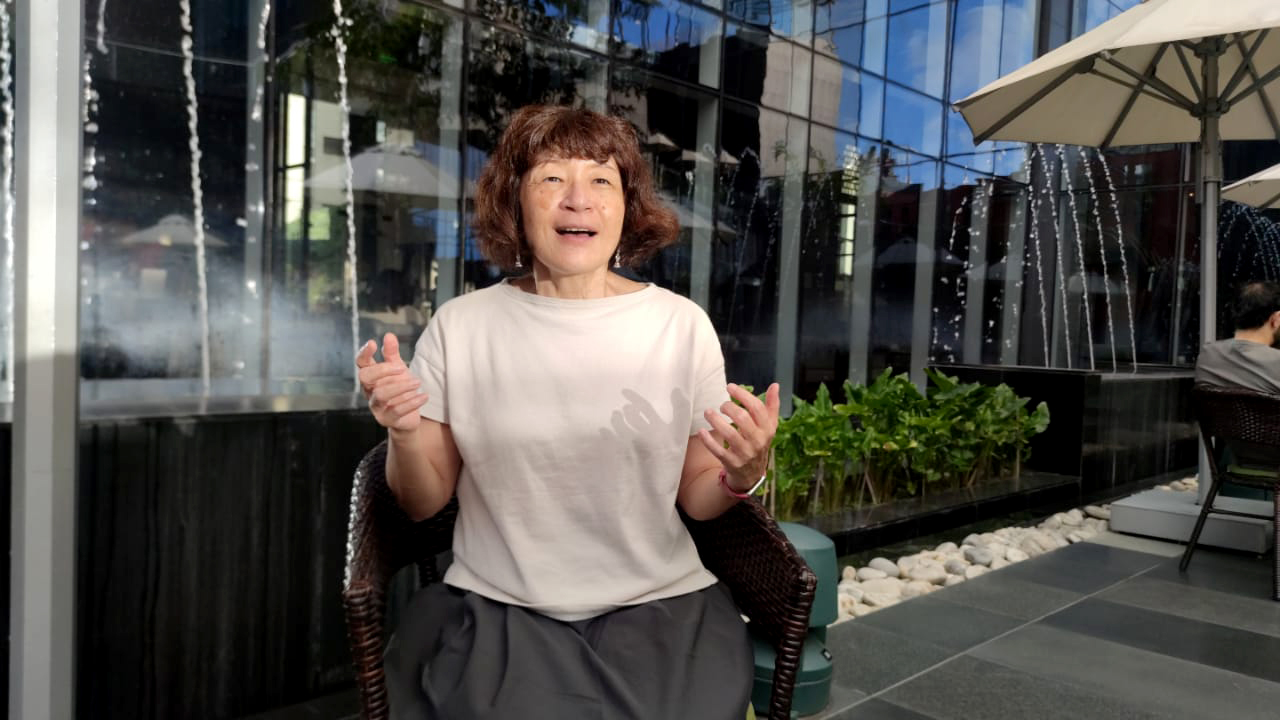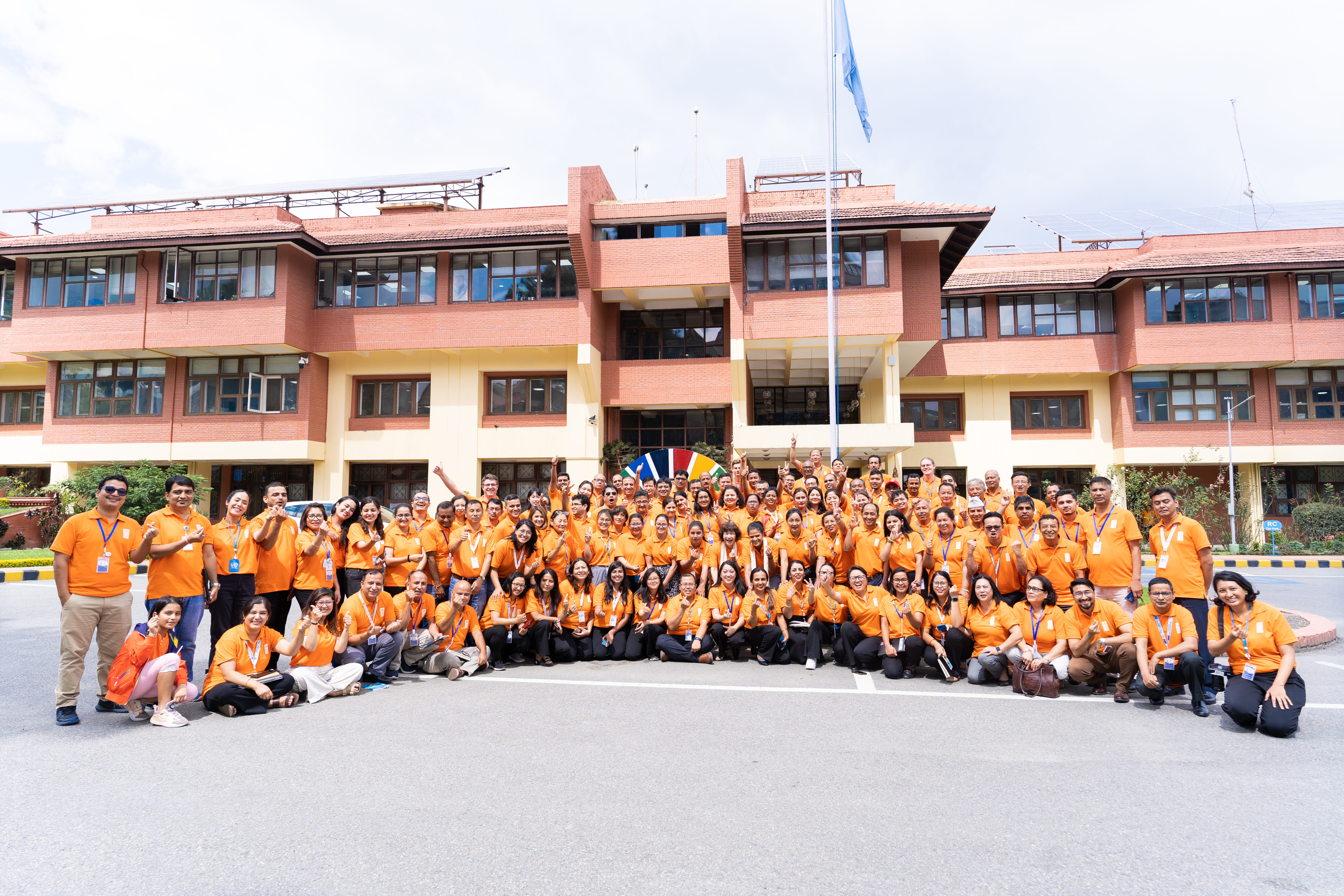Interview with Koh Miyaoi, UNDP’s Asia and the Pacific Gender Team Leader
Walking the talk on gender equality
September 29, 2023

Much has been talked about gender equality. But the stark reality remains: at the current pace of progress, it will require an additional 131 years for the world to fully bridge the gender gap between men and women, according to the 2023 report by the World Economic Forum. Despite several well-coordinated efforts, the progress towards gender equality has been painfully slow. It has been a highly challenging area of work in developing countries like Nepal where deep rooted social norms stand as the formidable barriers to change. Among several new and innovative efforts, UNDP has pioneered a highly effective tool to close the persistent gender gaps from within its own workplace towards impacting on the development outcomes we deliver. UNDP’s Gender Equality Seal Certification Programme provides a solid assessment tool for meeting specific standards to promote gender equality and empower women. By successfully completing the certification process, UNDP Country Offices are awarded a Gender Equality Seal – from Bronze to Gold – that officially recognizes their achievement of gender equality in the workplace, business practices and development results.
Only this week, UNDP Nepal achieved the Gold Standards recognition for its substantive contributions to advancing gender equality and social inclusion in the country, joining the ranks of select country offices to receive this honor. Ms. Koh Miyaoi, UNDP’s Asia and the Pacific Gender Team Leader, has been leading the Gender Seal journey in the region and was here in Nepal for the gold seal appraisal process. In an interview with UNDP Nepal’s Head of Communications Kamal Raj Sigdel, Koh shared insights into the Gender Equality Seal process, its significance, and the possibility of using the tool beyond boundaries of the organization, including private sector and the governments institutions. Below are the excerpts from the interview:
What is the Gender Equality Seal process that UNDP is pioneering across the countries?
Koh Miyaoi: The Gender Equality Seal came from the recognition that in order to promote the gender equality agenda in the countries we serve, we need to walk the talk within our offices. We need to work in a culture that appeals and demonstrates the value of gender equality. This will show in the results we deliver when we design and implement development interventions. The Gender Equality Seal looks at institutional management and development, and we examine several areas such as leadership, policy framework, capacity, internal culture, and knowledge management. We then rank the certification levels from bronze to gold, based on the percentage score achieved by each country office in the final assessment.
What does actually the assessment process look like. Could you take us through the steps?
We look at it as an institutional management or development exercise for gender equality, and we think of several areas which are very relevant and important for institutional development. So, one is leadership. How is our leadership demonstrating gender equality? How are they leading by example. Two is whether we have a policy framework within our organization to guide us through and also hold us accountable.
Three, we also look at the capacity issue. Do we have the sufficient capacity within our organization to address gender equality and provide solutions? Four, we also look at our internal culture: if we don't have gender equality as part of our daily life, it will be difficult to design and deliver development interventions that would support gender inequality. It'll just be a talk, but not a commitment. So, we want to make sure our internal culture reflects the value of gender equality upheld by the organization.
Five, we are also aware that we cannot deliver this gender equality agenda by ourselves. We need to work with a range of partners who know different aspects of better solutions for the inequality. So, it's very important that we work with a range of partners for the right purposes and for the right directions. Six, we also look at the way we manage our knowledge within the organization and externally. So how we communicate gender equality results and how we communicate the importance of gender equality. And how do we use communications and our knowledge to advance the gender equality agenda in the country. So, we look at that. And finally, [seven] we also look at how our results look like and this we examine not only from what we produce as ourselves as a project report and our communication materials but we request our partners to share their candid view of how UNDP is doing in terms of promoting gender equality.
Could you tell us more about the different certification levels in the Gender Seal process? What does it mean for an office to have a gold certification, for example?
Koh Miyaoi: As I mentioned the Gender Seal certification has three standards: Gold, Silver, and Bronze. In order to receive a bronze certification, a score of 60% is required in the final assessment. The Gender Seal process takes about two years to complete, during which time a baseline analysis is conducted, and an action plan is developed to make improvements in areas where the baseline assessment identified as poor. The final assessment then measures the improvement, and if the score is 60%, the country office is awarded a bronze certification. The silver certification requires a score of 70%, while the gold certification requires a score of 80% and above.
The difference between bronze and silver is just a number point, whereas the difference between silver and gold is more nuanced and requires more in-depth analysis. An in-person assessment team, including an external gender expert and UNDP gender expert, is sent to examine the status of gender equality and mainstreaming in the country office from the perspective of external gender experts. The analysis also involves consultation with UNDP's implementing partners and other external partners. If a country office scores more than 80% in the gold seal appraisal, they receive a gold certification.
What gap does the gender seal process address that previous systems did not?
Koh Miyaoi: The Gender Seal process addresses the internal reflections of UNDP in delivering gender equality results. We need to understand if we are capable of designing and delivering gender quality interventions. The gender seal certification program also helps to document our achievements, make them more transparent and concrete, and celebrate them.

Is the Gender Seal process only specific to UNDP, or is it going to be a UN system-wide assessment tool?
Koh Miyaoi: Currently, the Gender Seal process is only implemented by UNDP, but other UN agencies have shown interest. We also have a Gender Equality Seal program for public sectors. There is a diagnostic tool to understand where private sector companies are in delivering gender equality commitments, and UNDP can help to fill the gap and improve those areas.
Where do you see Nepal in terms of Asia Pacific countries in comparison, and where should UNDP focus its engagement with partners, including the private sector?
Koh Miyaoi: Some of the indicators that we commonly use to measure gender equality levels in different countries put Nepal not at the very bottom level. And actually, country like Japan is at a lower level because it looks at many different aspects: political gender equality, economic gender equality, social gender equality … many things (According to the 2023 Global Gender Gap Report, Nepal is ranked 116/146 and Japan 125/146). However, I think a lot of gender-based discriminations are not obvious. They are integrated into daily practices and merged with social practices and customs over the years and years. People may not even be aware of the gender biases within their own behavior, what they say, what they do, how they behave. So, I think UNDP should be able to expose those and address those issues that discriminatory social norms and practices that are hidden in our daily behaviour. But they're actually biased against women and therefore perpetuating gender inequality. I think UNDP has done a lot in Nepal. I can see in terms of preparing the policy and legal framework, more conducive for promoting gender equality, protecting women's human rights. The next stage of UNDP 's intervention should be focusing on something not as tangible immediately but will help the country in the long run to establish sustainable gender equality.
Nepal received gold certification from the Gender Seal process this week. What is your suggestion about taking this certification beyond UNDP, and what can UNDP say to the private sector?
Koh Miyaoi: UNDP colleagues in Nepal are now much more knowledgeable and equipped with tools to have conversations with government and private sector partners on the importance of gender equality. UNDP should encourage the private sector to integrate gender equality into their business strategies and policies.
In some Country Offices, for example in Indonesia and Sri Lanka, they have a project with ministries responsible for the environment. These ministries at the beginning of the partnership was not quite strongly addressing gender equality, but they had other issues that they wanted to address with UNDP. Encouraged by the Gender Seal process, UNDP started discussing why gender equality matters to the work relating to climate change or biodiversity or energy. And it resulted in those ministries having their own gender equity strategy. They said, oh ok, that makes sense. We would also like to have a gender equality strategy for our own ministry. And that was what happened as well. That's one example of how UNDP has become more proactive in promoting gender equality with partners. In Fiji Multi-Country Office, they have also approached the donors who were not convinced initially why they needed to address gender equality in a particular project area they're working on with UNDP. But through dialogues with the UNDP colleagues, the donor was convinced that this we should include interventions in this project which will address gender equality. So that's what happens as well.
Anything I missed to ask, and you want say at the end?
There is one thing that I want to emphasize. The Gender Equality Seal may be seen as a tool to only support gender equality, but actually, it has a broader purpose of supporting institutional development. While everybody starts talking about gender equality, it also brings the office together. The Seal cannot be successful unless the office uses a whole-of-office approach. So, all the Country Offices that undergo Gender Seal process, even if they don't get Gold, what we see as a change is that the office becomes more united. The office becomes more harmonized because they're united behind one purpose, gender equality. And it creates more conversation across the teams, it supports the internalization of organizations’ values across the teams, and it also creates renewed motivation in colleagues. It is an institutional development tool that is based on care and empathy.


 Locations
Locations



